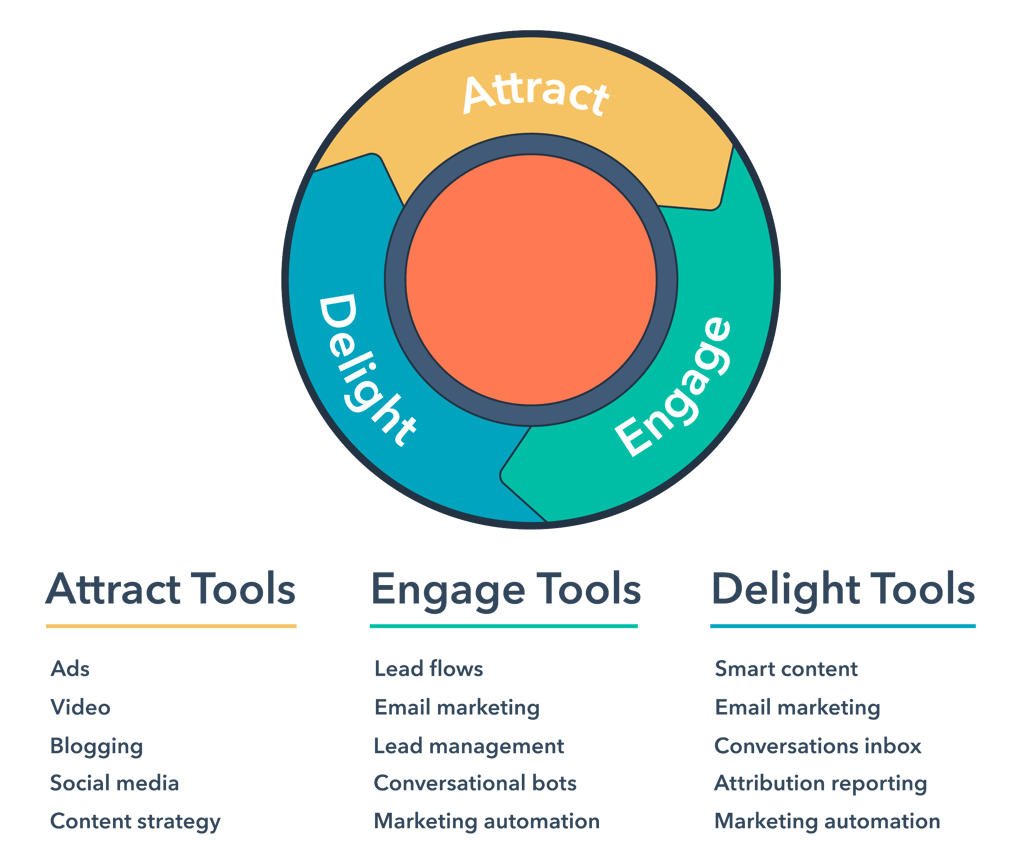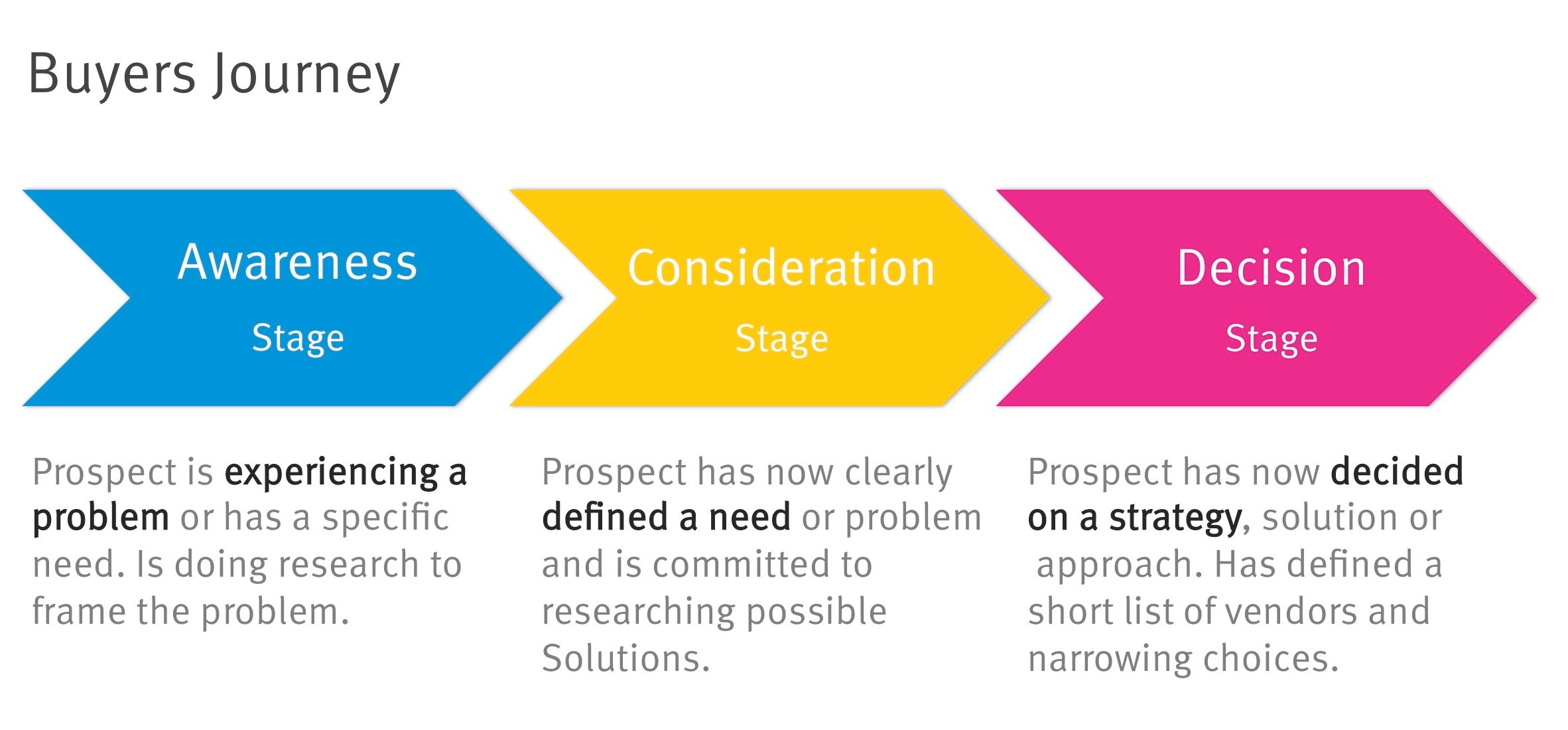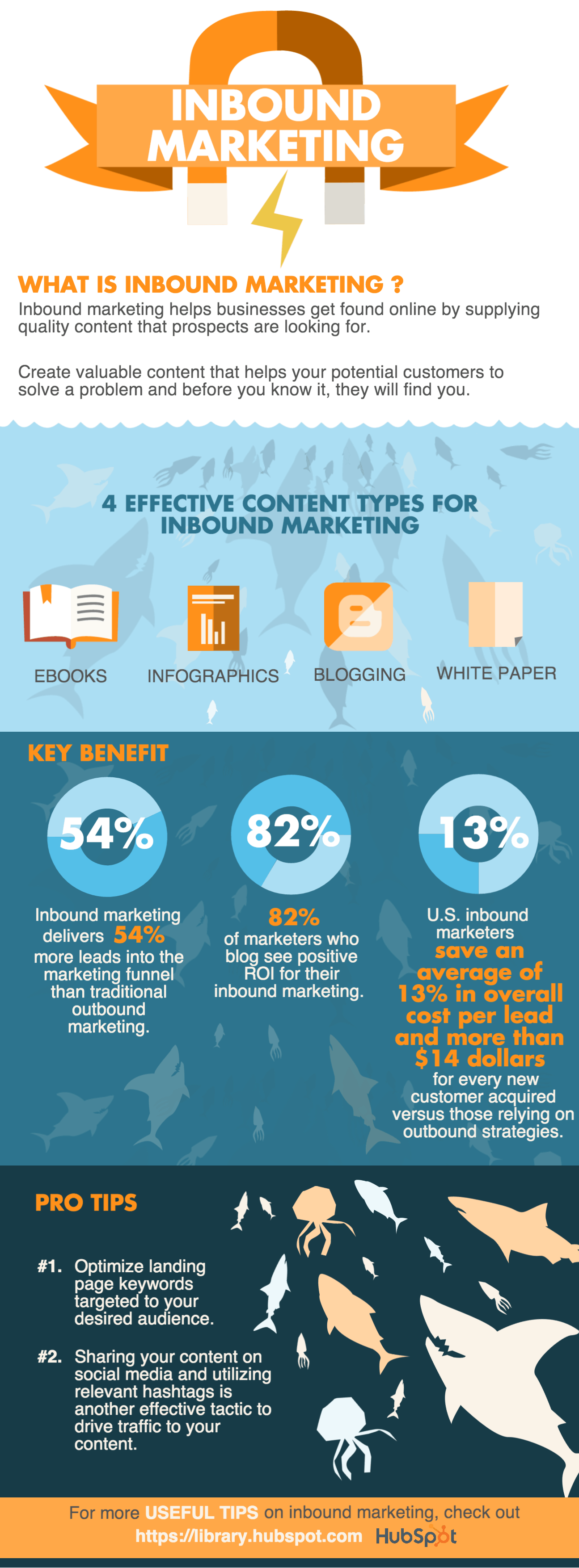Inbound marketing refers to the methodology of using content to "invite" visitors to your website. In other words, attracting prospects with helpful information rather than interrupting them with sales messages. Inbound marketing uses a combination of content (such as blogs, videos, infographics and ebooks) and channels (such as social media, email, marketing automation and conversation bots) to help you reach the right audience at the right time with the right message.
Inbound marketing incorporates organic content focused on SEO and a lead nurturing strategy focused on helping your prospects make an informed buying decision. HubSpot talks about this as creating "lovable" content.
Inbound marketing requires a well-planned strategy that is informed by personas (based on your best or ideal customers), which should identify:
- What your ideal customer wants to know
- The problems they are looking to solve
- How they are most likely to engage with a business in that industry
Here are some of the tools you could use in your inbound marketing process:
Align your content to your buyer's journey
Presenting the right message at the right time is crucial to the success of your inbound marketing efforts. Think about what you expect to learn about a business when you're first introduced. And then think about how much (or how little) time you want to invest in the initial contact points. Chances are, your attention span and patience isn’t at its maximum.
Also keep in mind that your website visitors may not be at the decision stage of a buyer's journey when they first encounter your website. You should plan content that educates your buyers for each of the three main stages of their journey: Awareness, Consideration, Decision.
Identify your key service or product pillars and how they solve your best customer's pain points. The next step is to consider how you can address their needs at each stage. The best way to do this is by creating buyer personas (this is a standard part of our research and analysis for any digital marketing project).
What’s a buyer persona and why does my business need them?
The cornerstone for a successful marketing strategy is identifying your ideal customer. You need to know how to effectively communicate with them: what you should be saying and the tone of voice.
If you haven’t created any personas, have a think about your best customer:
- What is their job title?
- How did they find you? (e.g. recommendation, google, social media, trade show)
- How do they engage with you? Do they prefer phone calls, emails or are they avid social media users?
- What are their main pain points, and how did your business solve them?
- What motivates them to make a decision?
- What kind of relationship do you have? Can you have a joke with them or is it more professional?
Answering these questions will help you identify not only the tone of voice, but also the channels your best leads are most likely to engage with.
Your personas inform your content
In turn, this will help you form an idea of what your leads want to read. Rather than assuming knowledge gaps, you’ll have an educated guess as to what they know, what’s interesting and what turns them off.
Your personas will also help you decide which marketing channels to use.
The pool of marketing channels is so much larger than simply Facebook, LinkedIn, email and Google. It covers all means of communications:
- Affiliate marketing
- Commerce
- Apps
- Blogs
- Social media
- Press releases
- Webinars
- SMS marketing
- SEO
- PPC
And that’s just what’s available in the digital realm!
We often recommend digital content marketing over print and direct, as it’s trackable. It’s much easier to measure your ROI (return on investment) with the plethora of tools available these days than print consumption.
Drilling down on social media marketing, for example, there are many channels, all differing in approach and audience. If you’re in B2B, you’ll no doubt find LinkedIn and Twitter best for conversion than Instagram and TikTok.
Content structure for lead generation
In addition to getting the tone of voice and the channels right for your leads, the type of content you share with them is of equal importance. Using a lead scoring tool on your website is one simple way of segmenting your leads. You can then create a marketing automation workflow based on engagement. You can create a content structure that looks something like this:
Intrigue
Lead score: 0 – 10 points
Content: blogs, videos, hints & tips.
Light content that doesn’t require too much time or attention. That said, it provides a good insight into who you are, what you do and how you can help them.
Discover
Lead score: 11 – 30 points
Content: whitepapers, guides, resources.
Slightly heavier content that introduces your leads to your ways of working and inspires them.
Consider
Lead score: 31 – 49 points
Content: product features, case studies
This content should showcase your success stories. Talk about how you have helped relatable customers achieve their goals.
Decide
Lead score: 50+ points
Content: pricing, demos, sales interactions, book a meeting
In theory, by this point, these leads have done a lot of research and may be ready to make a decision soon. Now is a good time to schedule a call, demo, meeting or an event where they can engage directly with your sales leads.
Need help creating content? Learn more about content creation services.
What about using inbound marketing in combination with paid advertising?
A good inbound marketing program makes use of both organic and paid content promotion.
Developing a comprehensive approach that uses both helps ensure success. Having the foundations set and ready to go will serve organic and paid leads well. It means there will be plenty of content available to educate them on your offering.
Organic inbound marketing tends to be lower cost but more time intensive.
Paid advertising, as suggested in the title, will cost money. You can scale your campaigns to suit your budget, and if executed well, reaps rewards much quicker than organic marketing.
Summary
Inbound marketing is a highly effective way to raise awareness of your business and generate leads, if planned and executed well. It’s essential to create customer personas first, so you know not only who to target but where and how.
Interested in taking your inbound marketing up a level?






